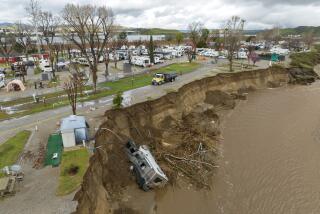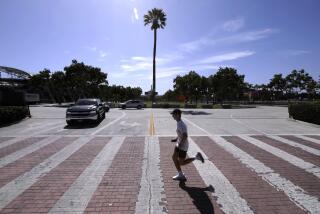New anti-warming tool: white roofs
- Share via
Builders have known for decades that white roofs reflect the sun’s rays and lower the cost of air conditioning. But now scientists say they have quantified a new benefit: slowing global warming.
If the 100 biggest cities in the world installed white roofs and changed their pavement to more reflective materials -- say, concrete instead of asphalt-based material -- the global cooling effect would be massive, according to data released Tuesday at California’s annual Climate Change Research Conference in Sacramento.
Since 2005, the Golden State has required that flat commercial structures have white roofs. Next year, new and retrofitted residential and commercial buildings, with both flat and sloped roofs, will have to install heat-reflecting roofing, as part of an energy-efficient building code.
But the state has yet to pass any rules to encourage cooler pavement on its roads, which are largely coated with heat-absorbing asphalt, a cheap byproduct of oil refining.
According to Hashem Akbari, a physicist with the Lawrence Berkeley National Laboratory, a 1,000-square-foot roof -- the average size on an American home -- offsets 10 metric tons of planet-heating carbon dioxide emissions in the atmosphere if dark-colored shingles or coatings are replaced with white material.
Globally, roofs account for 25% of the surface of most cities, and pavement accounts for about 35%. If all were switched to reflective material in 100 major urban areas, it would offset 44 metric gigatons of greenhouse gases, which have been trapping heat in the atmosphere and altering the climate on a potentially dangerous scale.
That is more than all the countries on Earth emit in a single year. And, with global climate negotiators focused on limiting a rapid increase in emissions, installing cool roofs and pavements would offset more than 10 years of emissions growth, even without slashing industrial pollution.
Akbari’s paper, “Global Cooling: Increasing Worldwide Urban Albedos to Offset CO2,” to be published in the journal Climatic Change, was written with his colleague Surabi Menon and UC Berkeley physicist Arthur Rosenfeld, a member of the California Energy Commission. All three have been associated with the laboratory’s Heat Island Group, which has published extensive research on how roofs and pavement raise urban temperatures.
Akbari and Rosenfeld said they will mount an effort to persuade the United Nations to organize major cities to alter their roofing and pavement.
“I call it win-win-win,” Akbari said. “First, a cooler environment not only saves energy but improves comfort. Second, cooling a city by a few degrees dramatically reduces smog. And the third win is offsetting global warming.”
--







